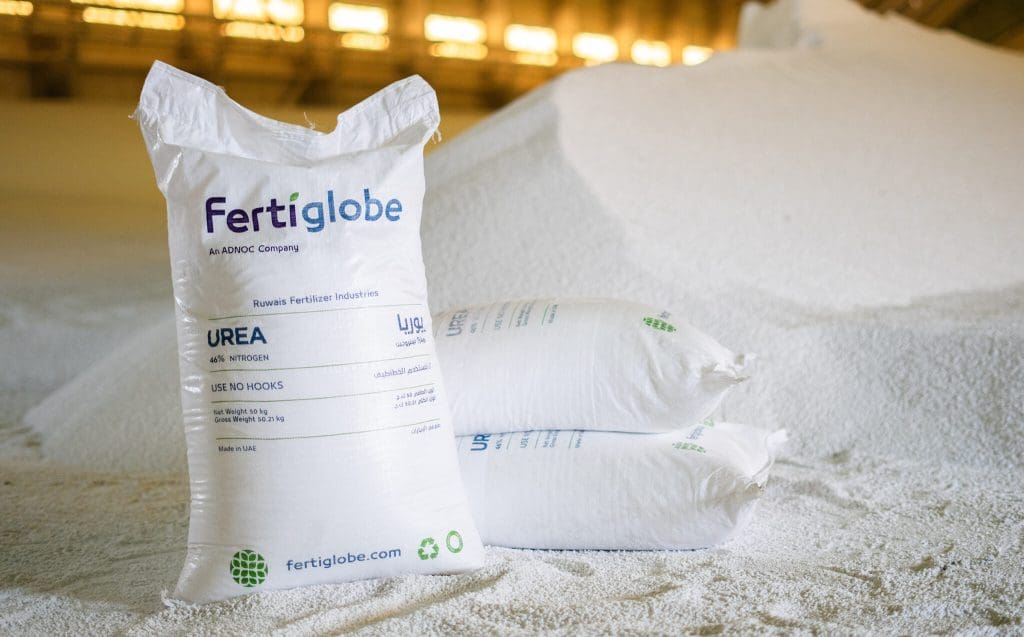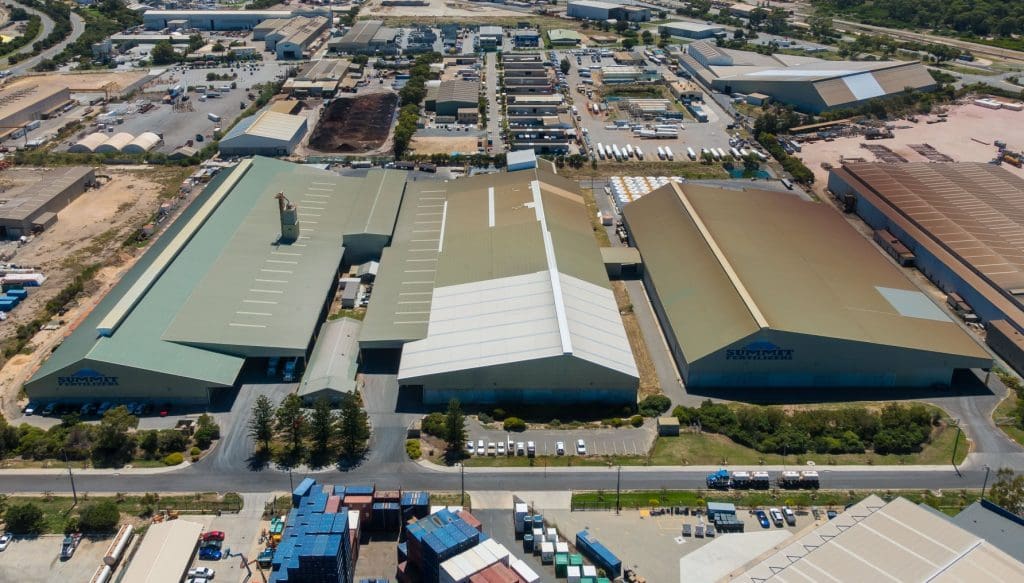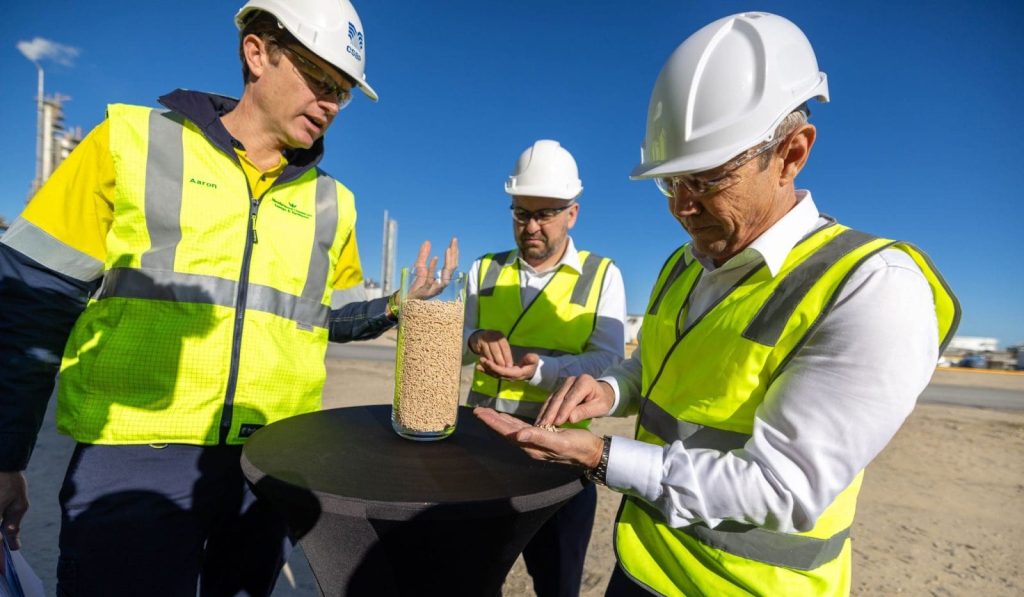
Fertiglobe is headquartered in Abu Dhabi and has production facilities across the Middle East and North Africa. Photo: Fertiglobe
IN FERTILISER industry news, Abu Dhabi-based Fertiglobe has acquired Wengfu Australia’s assets, while in Kwinana, Summit Fertilisers is progressing plans for a UAN pipeline, and CSBP has completed emissions-abatement upgrades at its newest nitric acid ammonium nitrate plant.
Fertiglobe buys Wengfu Australia distribution assets
Abu Dhabi-based nitrogen fertiliser producer and distributor, Fertiglobe, has signed an asset sale and purchase agreement to acquire the distribution assets of Wengfu Australia.
Owned by Chinese company Guizhou Phosphate & Chemical Group, Wengfu Australia operates from five ports – Adelaide, Geelong, Newcastle, Brisbane, and Portland – and has eight warehouses.
It distributes 700,000-800,000 tonnes of fertiliser annually to more than 200 customers with capacity to scale up to 1.1 million tonnes (Mt) per year.
Listed on the Abu Dhabi securities exchange (ADX), Fertiglobe is considered the world’s largest seaborne exporter of urea and ammonia combined.
The company’s production capacity is about 6.6Mt of urea and merchant ammonia, produced at four subsidiaries in the UAE, Egypt, and Algeria.
As of October, Fertiglobe is 86-percent owned by state entity Abu Dhabi National Oil Company, with the remainder traded on the ADX.
Fertiglobe chief executive officer Ahmed El-Hoshy said the acquisition aligned with the company’s strategy to expand its presence in key strategic sectors, diversify its global footprint, and build resilience against seasonality.
“Acquiring Wengfu’s assets marks a strategic step in our value-driven growth strategy and accelerates our commercial footprint in Australia, one of the world’s fastest-growing agricultural regions,” Mr Ahmed El-Hoshy said.
“It also provides us with a strong distribution platform across the Asia-Pacific region, strengthens access to our customers, and enhances our ability to competitively source and deliver our products and services.
“Having known Wengfu’s team for several years, we have strong confidence in their ability to grow the business from here.”
Summit pipeline proposal approved
Western Australian company Summit Fertilizers has moved a step closer to building an underground pipeline from the Kwinana Port to its nearby storage ponds after securing approval from the WA’s Development Assessment Panel (DAP).
Despite winning support from the DAP and the City of Kwinana, Summit Fertilizers’ pipeline proposal has drawn criticism from fellow WA fertiliser company Coogee Chemicals, which argued against the proposed route of the project and called for it to be reconsidered.

Summit Fertilizers operates a facility at Kwinana Beach in Perth. Photo: Kwinana Fertilizers
Summit’s proposal includes a 3km underground pipeline designed to transport Urea Ammonium Nitrate (UAN) from the Kwinana Bulk Jetty to Summit Fertilizers’ existing storage ponds at Kwinana Beach.
During the DAP meeting on April 30, project representative Matt Raymond from Element Advisory said the pipeline would reduce reliance on road transport.
“The pipeline will replace the current method of transporting this by truck from Kwinana Port Jetty to the Summit Fertilizer storage ponds, which are located on Summit’s premises,” Mr Raymond told the meeting.
“The outcome of this project will improve efficiencies …reducing the need for heavy vehicle movements back and forth between the jetty, so it’s a good outcome.”
Speaking against the proposal was Coogee Chemicals manager innovation and project development Russell Mackenzie, who questioned the lack of opposition to the plan by local and state government departments.
Coogee Chemicals is also located at Kwinana Beach, about 1km from the Summit Fertilizers site, and has existing underground pipelines to the bulk jetty.
He said Coogee had sought to construct an additional pipeline, but was informed that was not possible.
“We have a number of pipes along that road towards the port,” Mr Mackenzie said.
“We were informed that we wouldn’t be able to put any more pipes along that road because of the fact that it’s already too constricted.
“Our concern is that if it is too constricted for us, why is it not too constricted for others?”
Mr Mackenzie said the company also objected to the chosen route of the line, which he claimed, “crosses a number of roads and pipelines and other assets, not just ours”.
“Even for Summit, I would think that is second choice compared to easier, more straightforward routes.”
The panel noted that the City of Kwinana found the corridor was “practicable”.
Mr Mackenzie replied that anything could be “practicable”, but it didn’t mean “it’s the most logical, sensible or safest way”.
“We really think that this is flawed and you should consider other options.”
The panel ultimately backed the City of Kwinana’s position, giving the green light to the proposal.
“It is an underground undertaking, so it will reduce the movement of vehicles travelling through the locality,” DAP member Mike Mouritz said.
“All relevant authorities have been consulted and were supportive.”

WesCEF managing director Aaron Hood with Member for Cockburn David Scaife and WA Premier Roger Cook. Photo: Roger Cook
CSBP emissions project completed
Wesfarmers Chemicals Energy and Fertilisers (WesCEF) has taken a major step in its journey towards net zero with the installation of advanced technology that will virtually eliminate emissions from its newest Nitric Acid Ammonium Nitrate (NAAN) plant.
WA Premier Roger Cook visited Kwinana to mark the milestone, which was partly funded by a $500,000 grant from the WA Government’s Carbon Innovation Grants Program.
The program, designed to help heavy industry transition to net zero, has contributed to the installation of abatement catalysts that will result in a 98pc reduction of the plant’s nitrous oxide emissions.
The NAAN plant is one of three operated by CSBP, a chemicals and fertilisers business which forms part of WesCEF’s portfolio of leading, sustainable businesses.
The installation of the additional abatement catalysts, in combination with existing abatement catalysts installed in 2012, will convert greenhouse gases into less harmful substances before being released into the atmosphere.
WesCEF managing director Aaron Hood said planning was under way to install the additional abatement technology in CSBP’s remaining two older NAAN plants by 2030.
“WesCEF has always been an early adopter of emission reduction technology, and what we have installed…is best-in-class and allows us to continue to support key customers in agriculture and mining industries here in WA,” Mr Hood said.
“Our decarbonisation journey began in 2012 when we first installed abatement technology in our plants, and as a result, we’ve abated over 10 million tonnes of carbon dioxide equivalent over the past 13 years.
“This latest installment is yet another major step towards achieving our target of a 30 per cent reduction in emissions by 2030 and net zero by 2050.”
Mr Cook said decarbonising key industries ensured WA’s industry was “the best in Australia”.
“I want to ensure Western Australia’s economy remains the strongest in the nation,” Mr Cook said.
“This project is the exact thing I want to see more of in WA.
Grain Central: Get our free news straight to your inbox – Click here

HAVE YOUR SAY